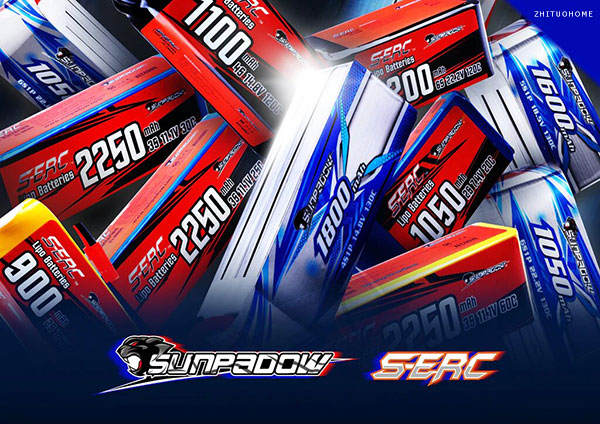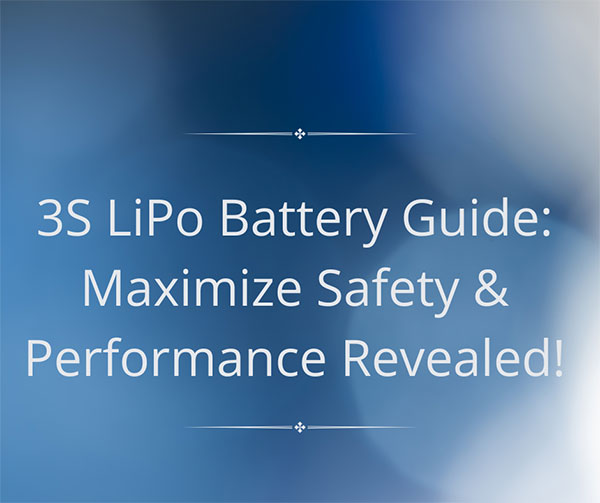5 LiPo Battery Types for Extreme Performance: Power Up Your Devices

Introduction:
In the world of high-performance electronics, having the right battery is crucial. Whether you're a drone enthusiast, RC car racer, or just need reliable power for your gadgets, choosing the best LiPo (Lithium Polymer) battery can make all the difference. In this article, we'll explore the top 5 LiPo battery types renowned for their extreme performance. From durability to power output, we'll delve into each battery's unique features to help you make an informed decision.
Exploring the Top 5 LiPo Battery Types for Extreme Performance:
| Heading | Subheading |
|---|---|
| 1. Nano-Tech LiPo Batteries | - Unleashing Power in Compact Form |
| - Cutting-Edge Technology for Enhanced Performance | |
| 2. Graphene LiPo Batteries | - Pushing the Limits of Power Density |
| - Lightweight Design with Maximum Power Output | |
| 3. High-Voltage LiPo Batteries | - Amp Up Your Devices with High Voltage |
| - Ideal for High-Performance Applications | |
| 4. Ultra-High Discharge LiPo Batteries | - Instant Power Surge for Intense Performance |
| - Perfect for Racing and High-Speed Applications | |
| 5. Heavy-Duty LiPo Batteries | - Durability Meets Performance |
| - Longevity and Reliability for Demanding Tasks |
Nano-Tech LiPo Batteries:
Nano-Tech LiPo batteries are revolutionizing the world of high-performance electronics. These batteries utilize cutting-edge nanotechnology to pack more power into smaller, lighter cells. With their ultra-compact design, Nano-Tech batteries offer unparalleled power density, making them ideal for applications where space is limited. Whether you're flying a drone or racing an RC car, Nano-Tech LiPo batteries deliver the power you need in a compact form factor.
Graphene LiPo Batteries:
Graphene LiPo batteries are at the forefront of battery technology, thanks to their use of graphene—an ultra-thin, lightweight material known for its exceptional conductivity. By incorporating graphene into the battery's electrodes, Graphene LiPo batteries achieve higher power densities and faster charge rates compared to traditional LiPo batteries. This results in lighter, more powerful batteries that can keep up with the most demanding applications.
High-Voltage LiPo Batteries:
High-voltage LiPo batteries are designed to deliver maximum power to your devices. By operating at higher voltages, these batteries can provide a significant boost in performance, making them perfect for high-performance applications like racing drones or RC cars. With their ability to deliver more power with each charge, high-voltage LiPo batteries ensure that your devices perform at their best when it matters most.
Ultra-High Discharge LiPo Batteries:
When it comes to extreme performance, ultra-high discharge LiPo batteries are in a league of their own. These batteries are capable of delivering massive amounts of power in a fraction of the time compared to standard LiPo batteries. Whether you need to accelerate quickly on the racetrack or perform high-speed maneuvers with your drone, ultra-high discharge LiPo batteries provide the instant power surge you need to stay ahead of the competition.
Heavy-Duty LiPo Batteries:
For applications that demand durability and reliability, heavy-duty LiPo batteries are the go-to choice. Built to withstand the rigors of intense use, these batteries are designed to deliver consistent performance in even the most demanding conditions. Whether you're powering a remote-controlled boat through rough waters or navigating treacherous terrain with an off-road RC truck, heavy-duty LiPo batteries provide the longevity and reliability you need to keep going.
FAQs (Frequently Asked Questions):
How do I choose the right LiPo battery for my needs?
- Choosing the right LiPo battery depends on factors such as voltage, capacity, and discharge rate. Consider the specific requirements of your device and match them to the capabilities of the battery.
Are LiPo batteries safe to use?
- While LiPo batteries can be safe when handled properly, they do pose certain risks if mishandled or damaged. It's essential to follow proper charging, storage, and usage guidelines to minimize the risk of accidents.
Can I use a LiPo battery with my RC car or drone?
- Yes, LiPo batteries are commonly used in RC cars, drones, and other high-performance electronics due to their high energy density and power output.
How long do LiPo batteries last?
- The lifespan of a LiPo battery depends on various factors, including usage patterns, charging practices, and environmental conditions. With proper care and maintenance, LiPo batteries can last for hundreds of charge cycles.
What should I do if my LiPo battery swells or becomes damaged?
- If a LiPo battery swells or becomes damaged, it should be safely disposed of following proper procedures. Avoid using damaged batteries, as they can pose a safety hazard.
Can I charge my LiPo battery with any charger?
- It's essential to use a charger specifically designed for LiPo batteries to ensure safe and proper charging. Using the wrong charger can result in overcharging or damage to the battery.
Conclusion:
When it comes to extreme performance, the right battery can make all the difference. From Nano-Tech to Heavy-Duty, each of the top 5 LiPo battery types offers unique features and capabilities to power up your devices to the max. By choosing the battery that best suits your needs, you can ensure that your high-performance electronics perform at their best when it matters most.



